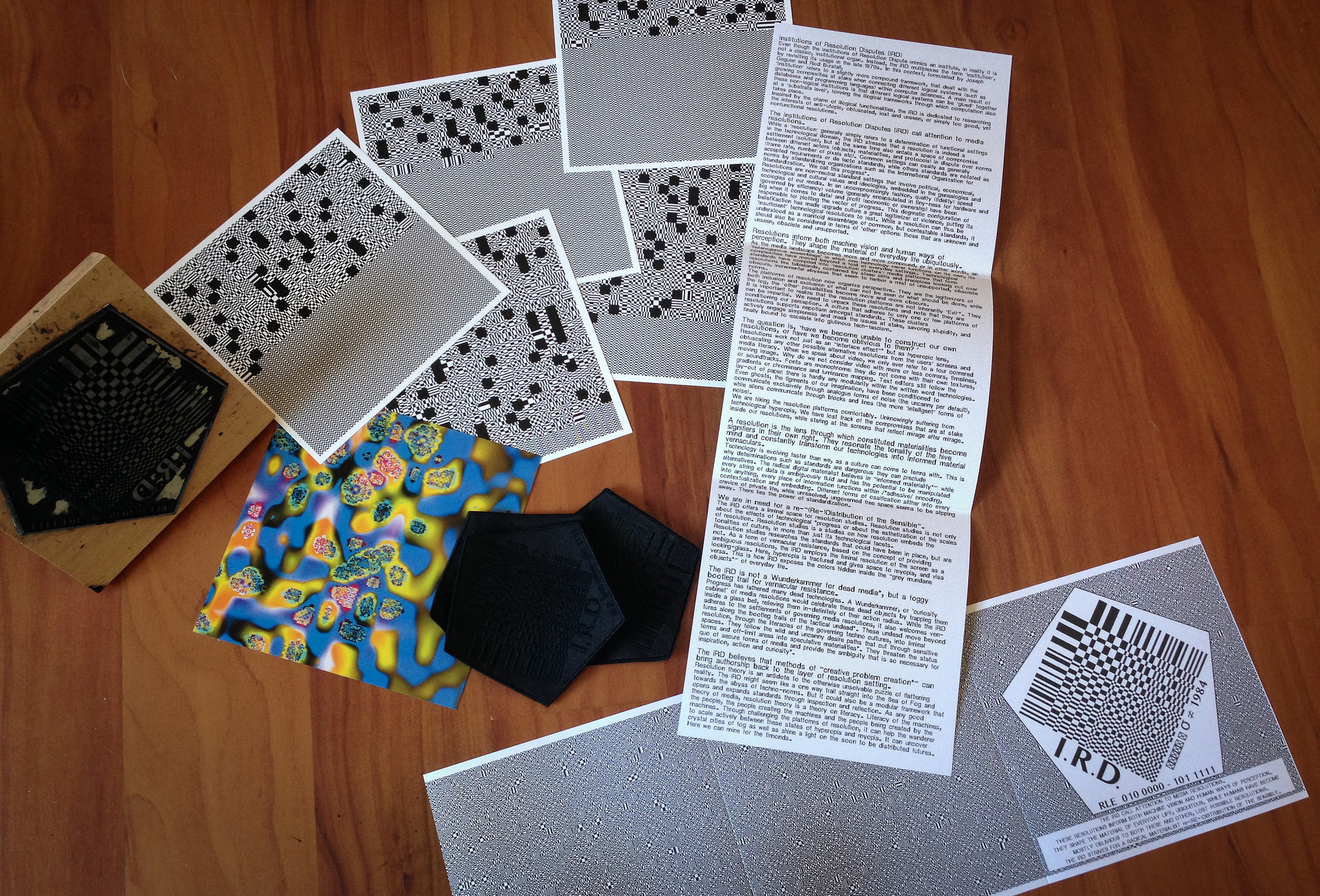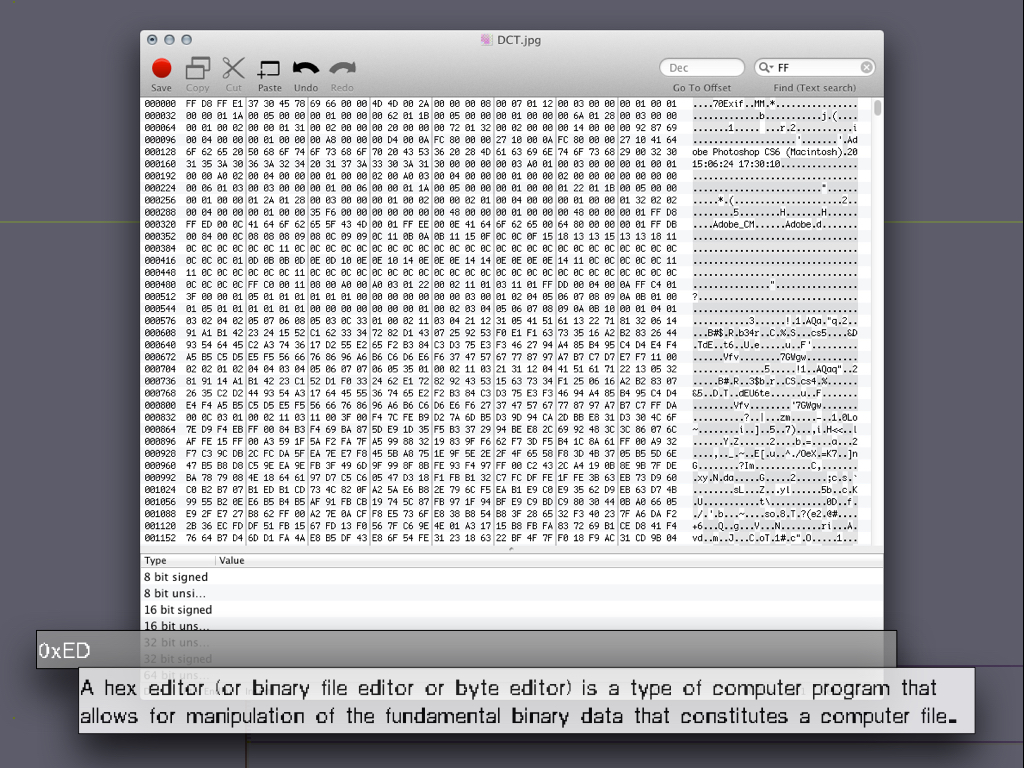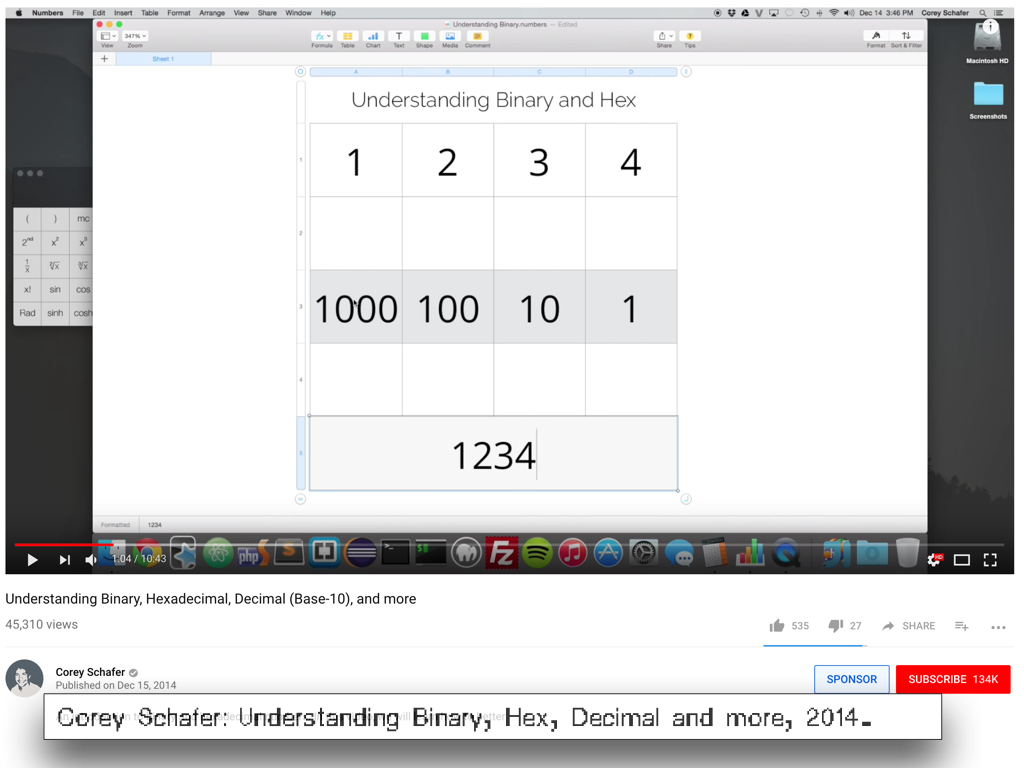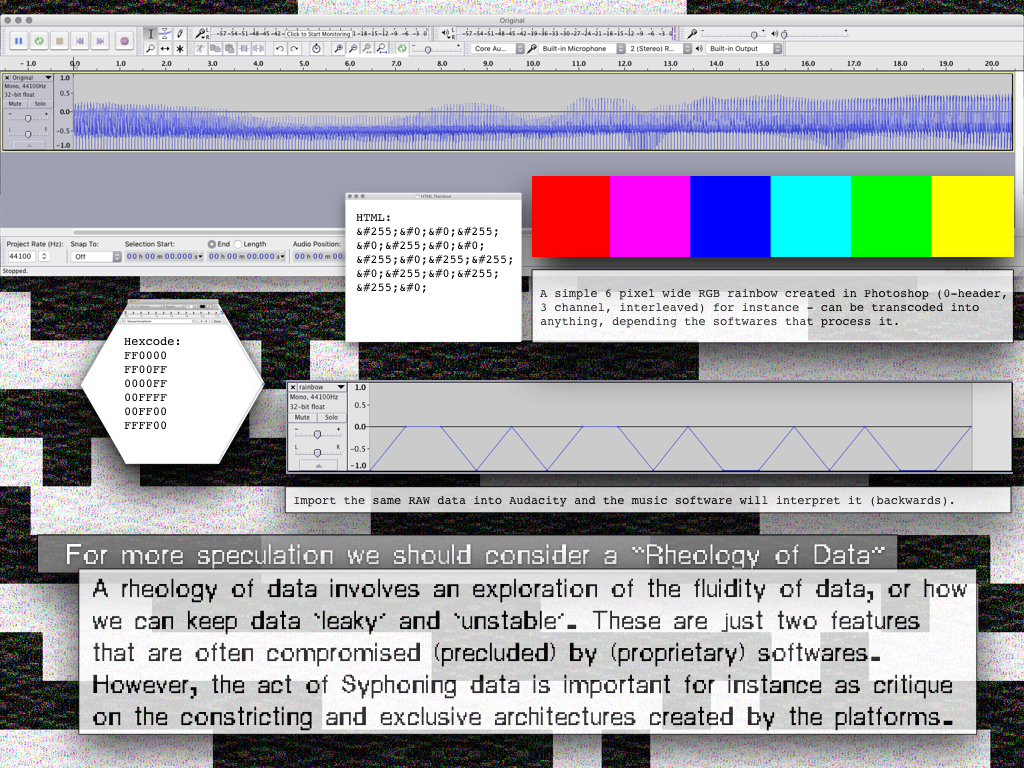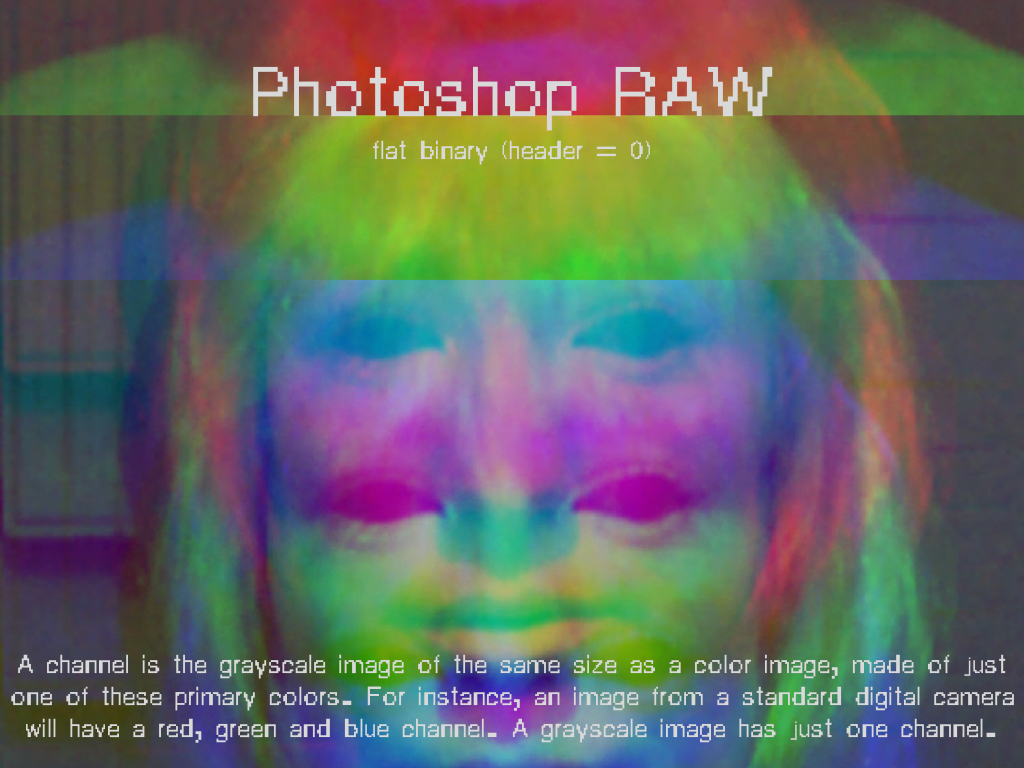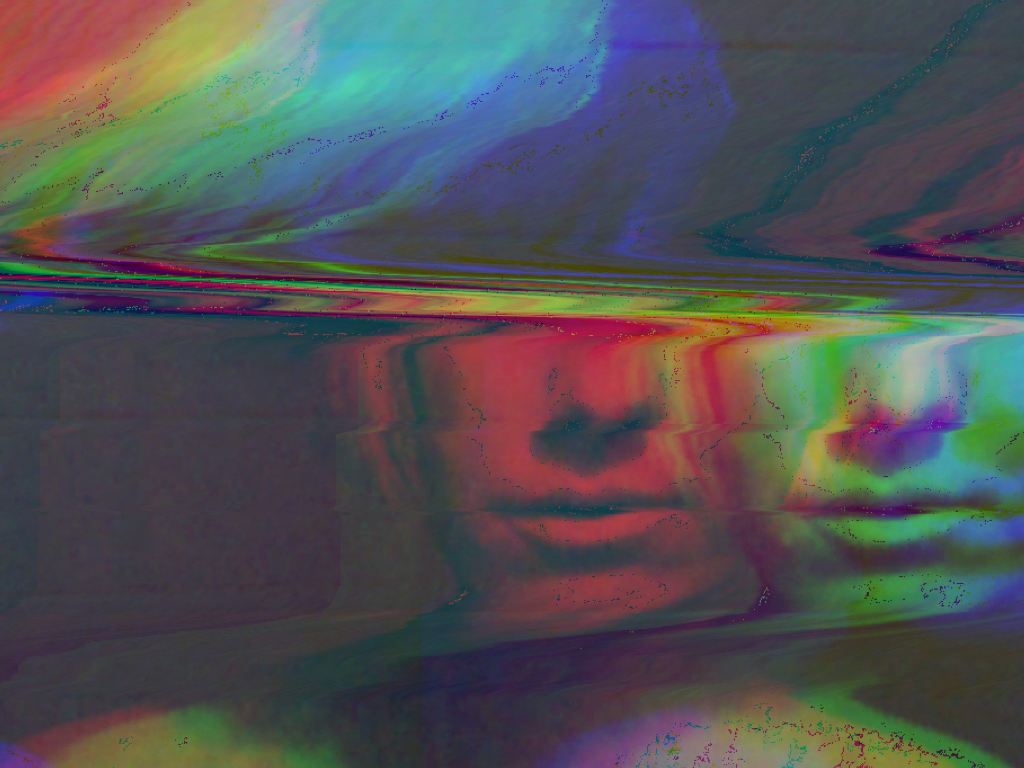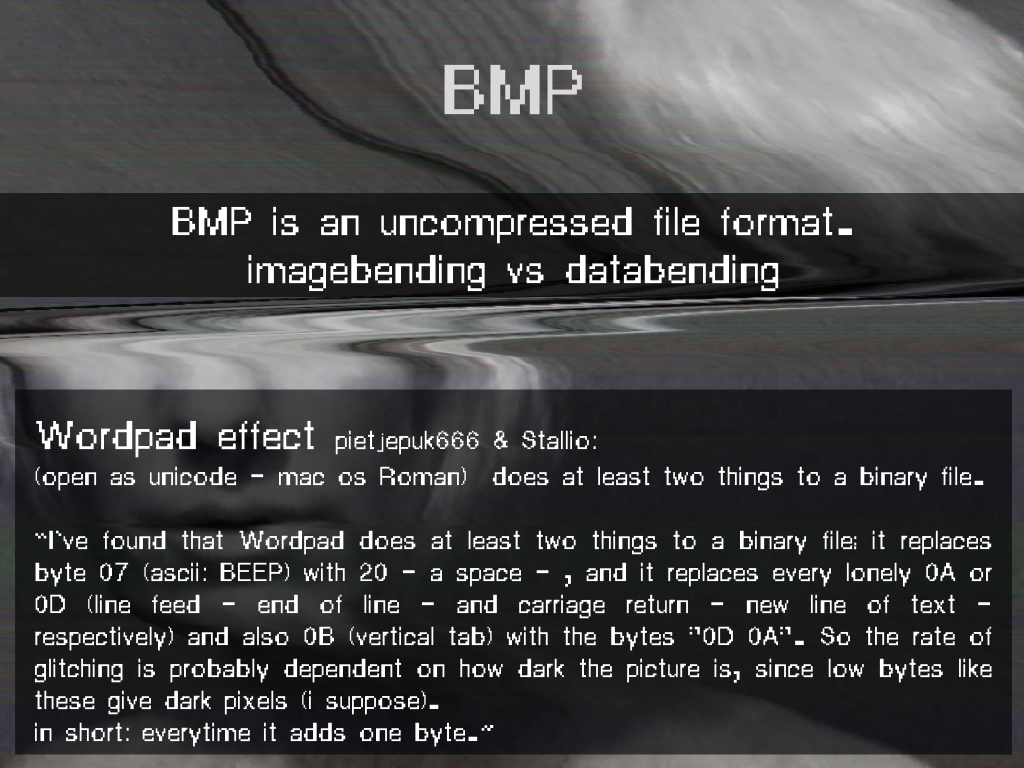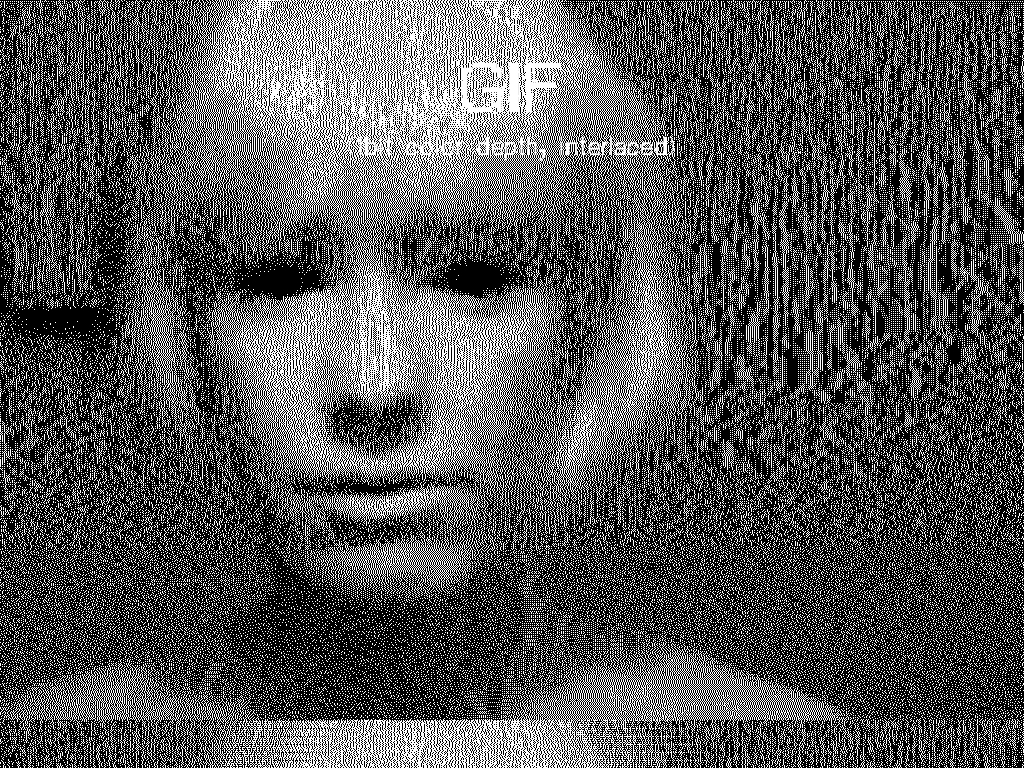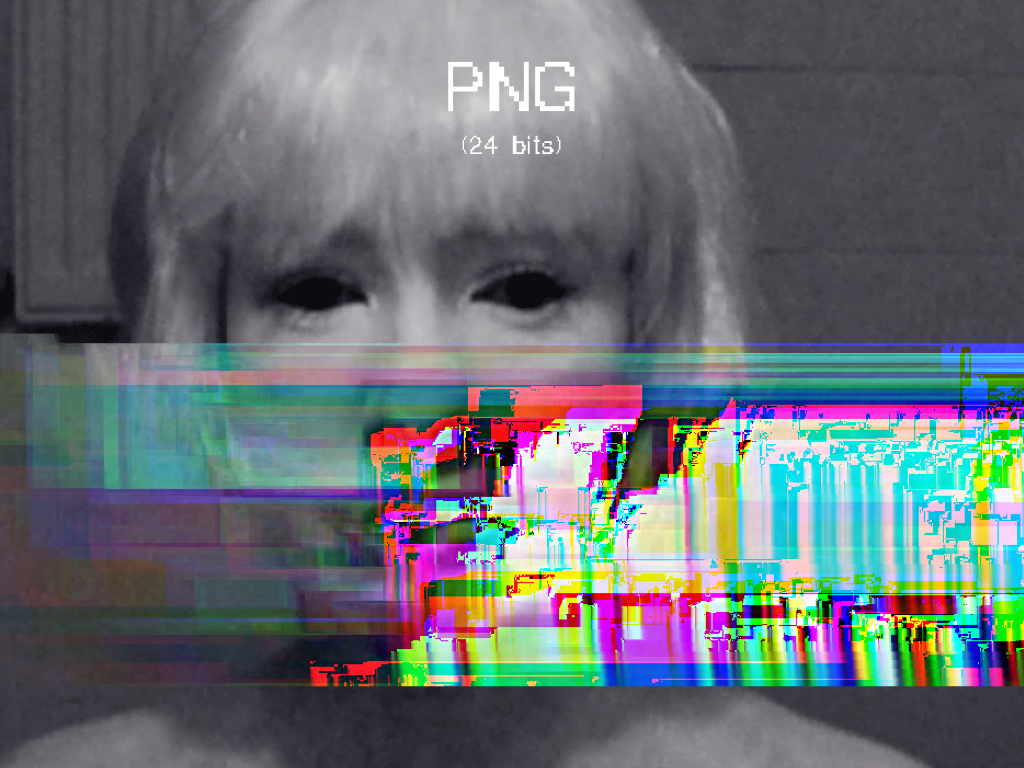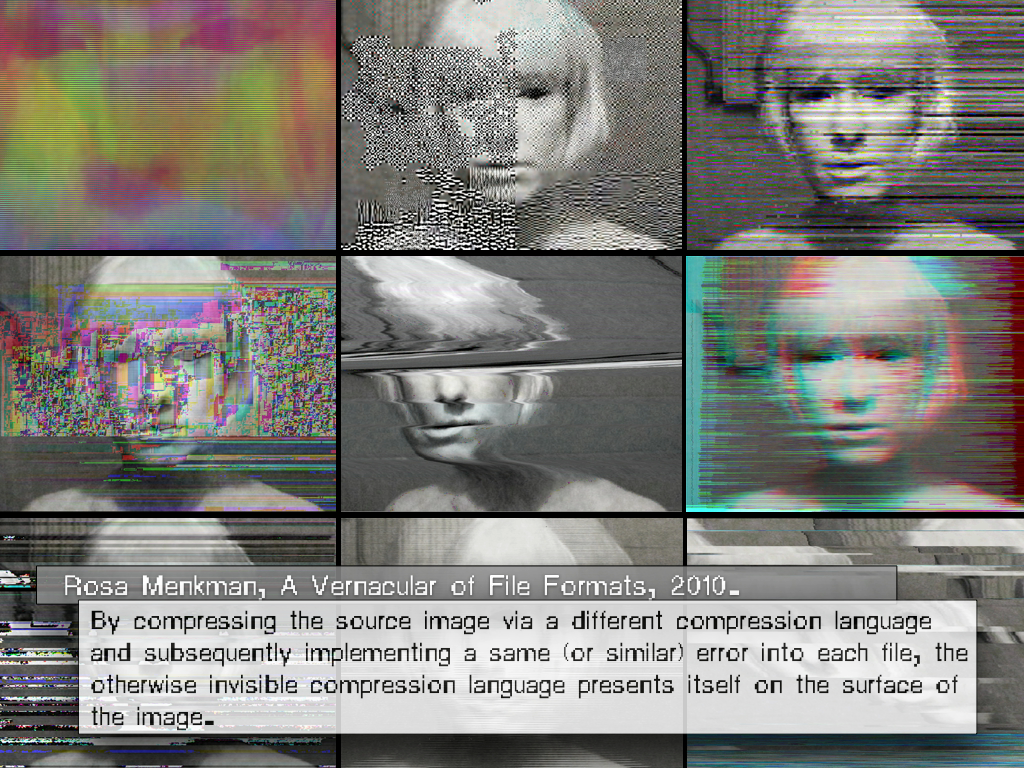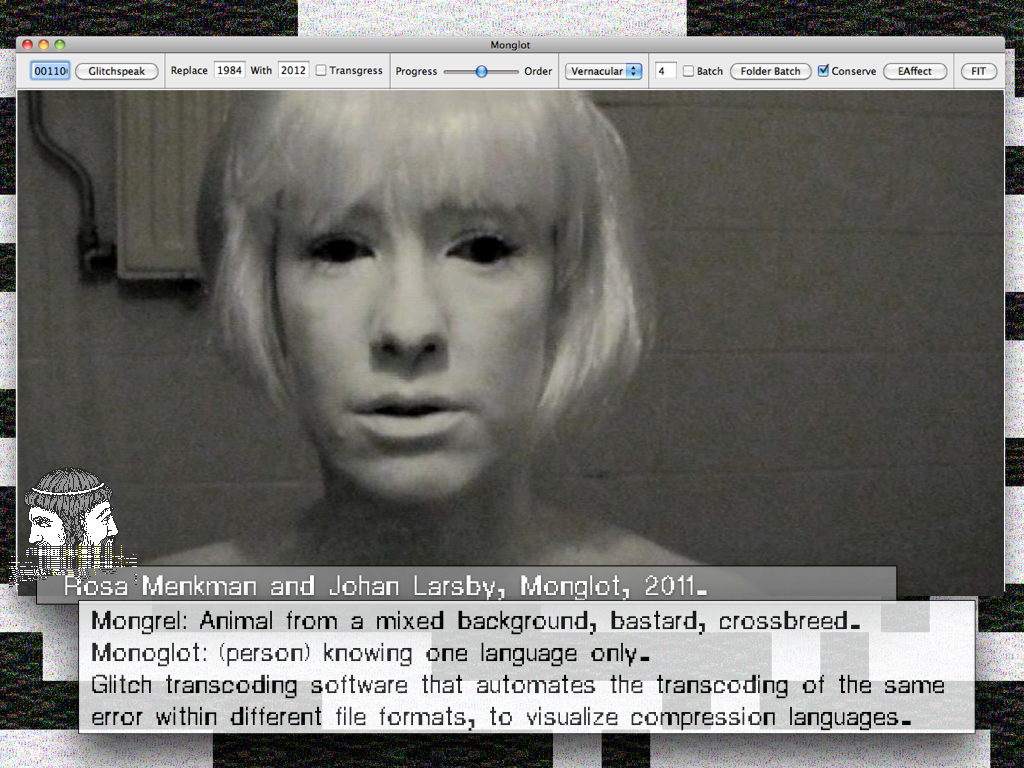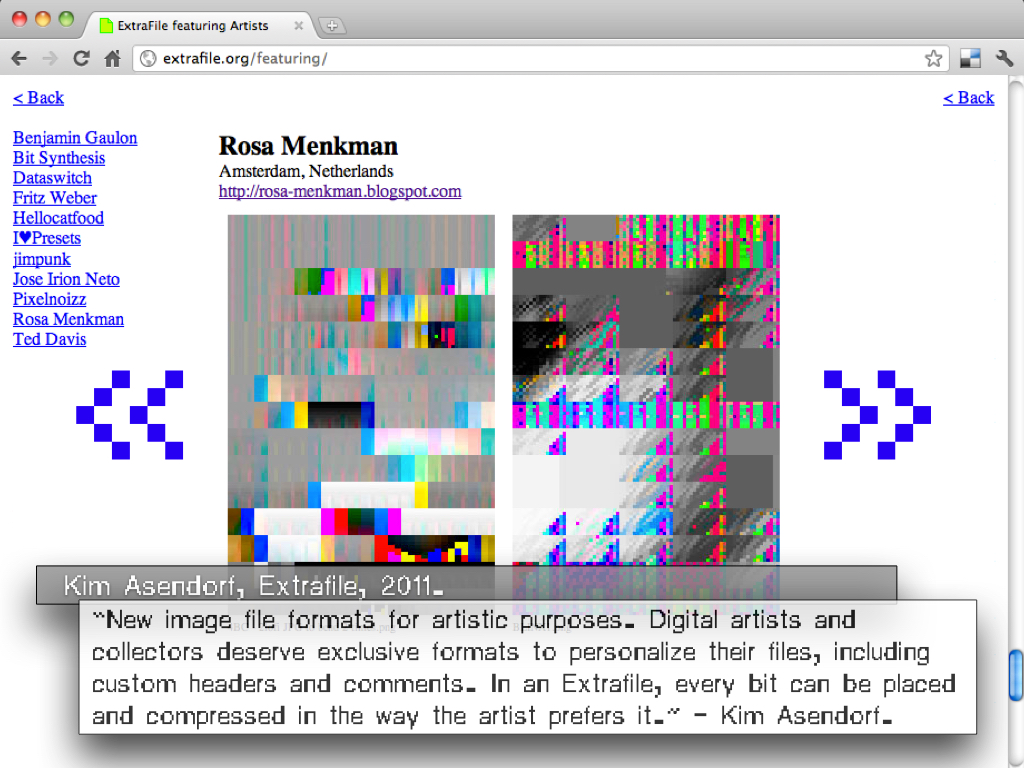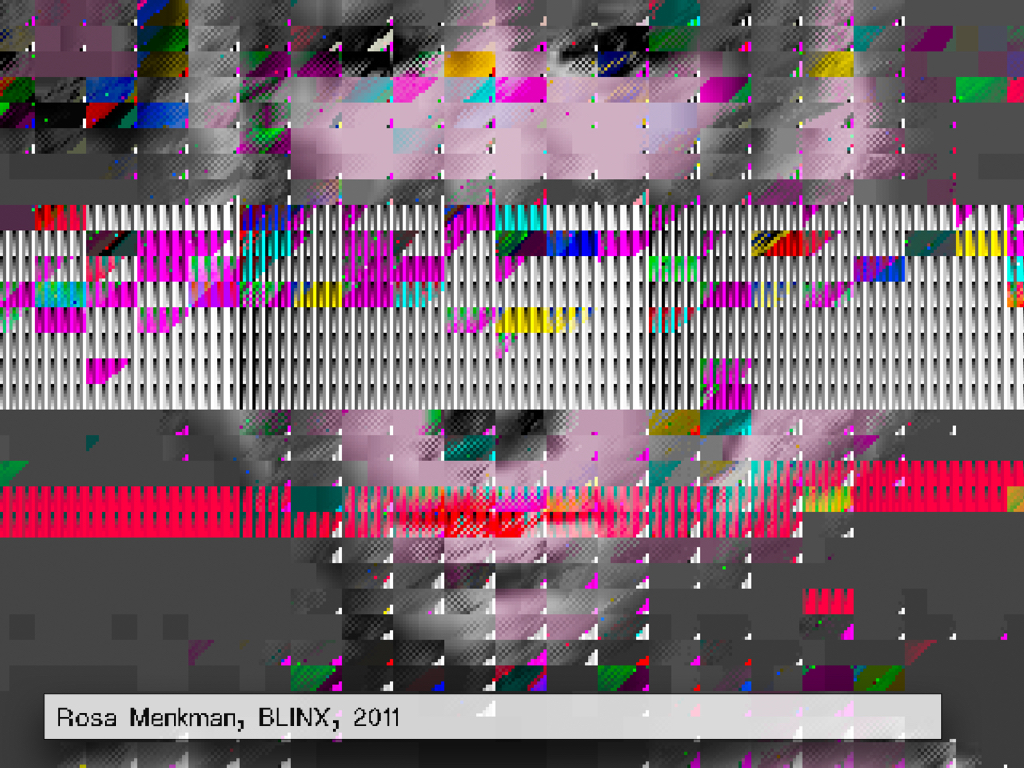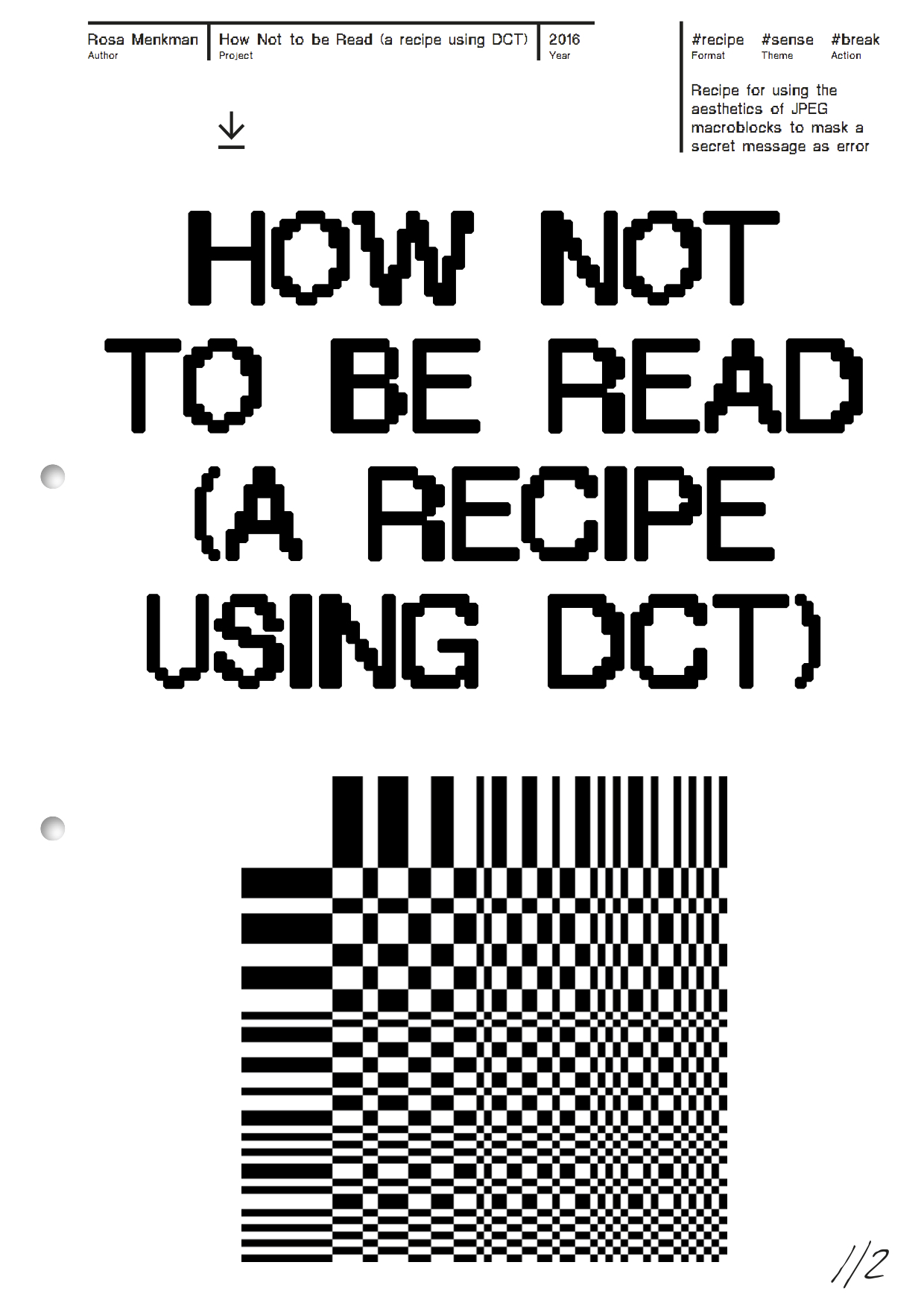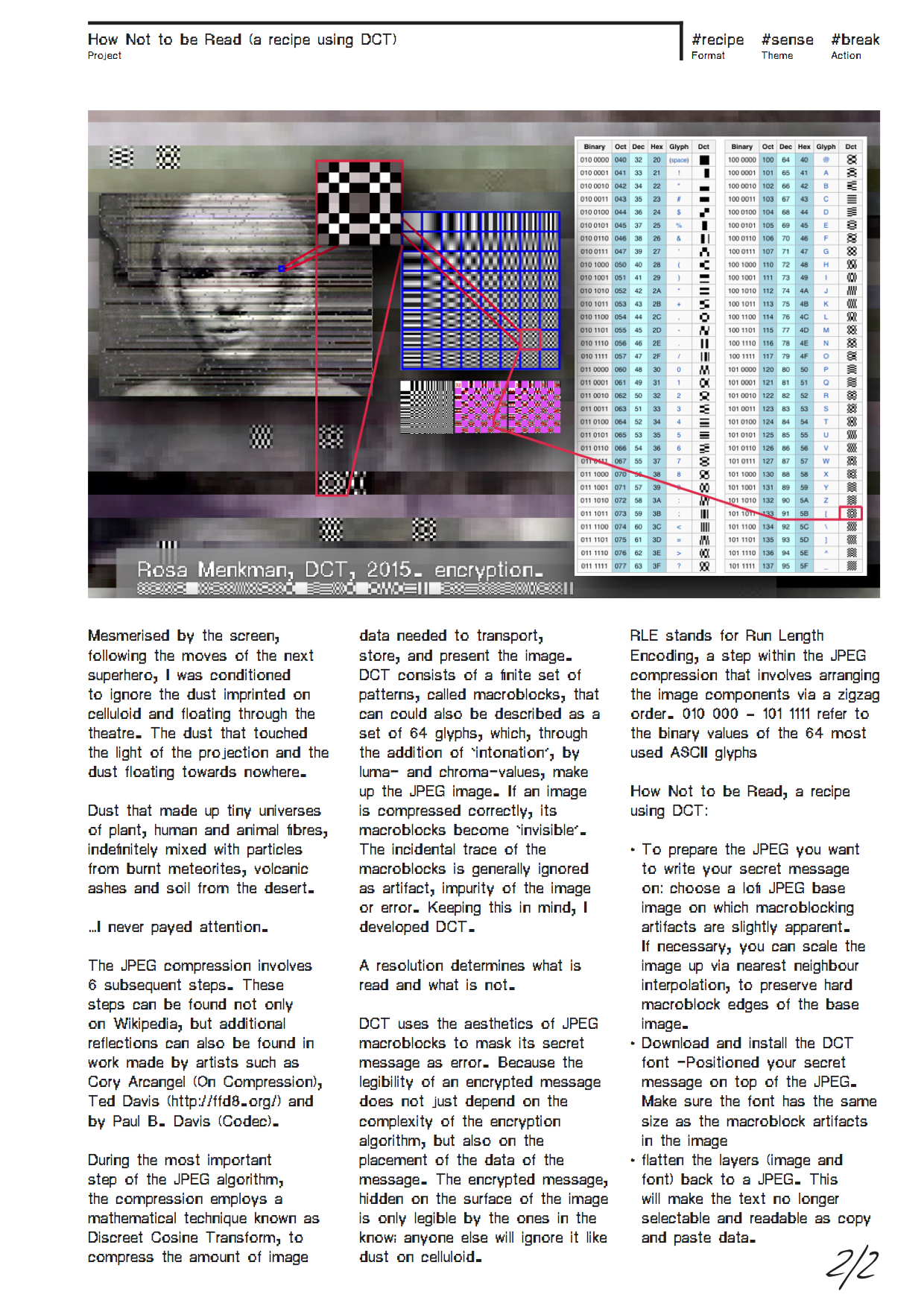[ 0000 ]
Resolution Dispute 0000 : Materiality
[[part of Resolution Studies]]
“Materiality is reconceptualized as the interplay between a text's physical characteristics and its signifying strategies, a move that entwines instantiation and signification at the outset. This definition opens the possibility of considering texts as embodied entities while still maintaining a central focus on interpretation. It makes materiality an emergent property, so that it cannot be specified in advance, as if it were a pre-given entity. Rather, materiality is open to debate and interpretation, ensuring that discussions about the text's "meaning" will also take into account its physical specificity as well.”
- Hayles, N. Katherine. "Print is flat, code is deep: The importance of media-specific analysis." Poetics Today 25.1 (2004): 67-90.
A reflexive approach to materiality makes it possible to re-conceptualize materiality itself as ‘the interplay between a text’s physical characteristics and its signifying strategies’. Rather than thinking in the mediums’ material as fixed in physicality, a re-definition of materiality is useful because it opens the possibility of considering any text as embodied entity “while still maintaining a central focus on interpretation. In this view of materiality, it is not merely an inert collection of physical properties but a dynamic quality that emerges from the interplay between the text as a physical artifact, its conceptual content, and the interpretive activities of readers and writers.”
Reflections on materiality should not just happen on a technological level. To fully understand a work, each level of materiality should be studied: the physical and technological artifact, its conceptual content, and the interpretive activities of reader, artist and audience. [the choice of any] digital material is not innocent or meaningless. With enough knowledge of the material, an investigation into digital materialilty can uncover stories about the origin and history of the material, by others.
▁∣∖▁╱◝◟.❘╱▔▔╲̸/╲╱▔▔▔╲∣∖╱▔╲▁▁∣∖▁╱◝◟.╱▔▔╲________
The slides underneath are from the course ‘Materiality’, which took place over three meetings during the New Media class ‘Beyond Resolution’ I thaught as substitute professor at the KHK (Kassel) in 2018. During these weeks we unpacked the term ‘materiality’ via a research into various file formats. The slides are clickable; they either link to the work reference or zoom.
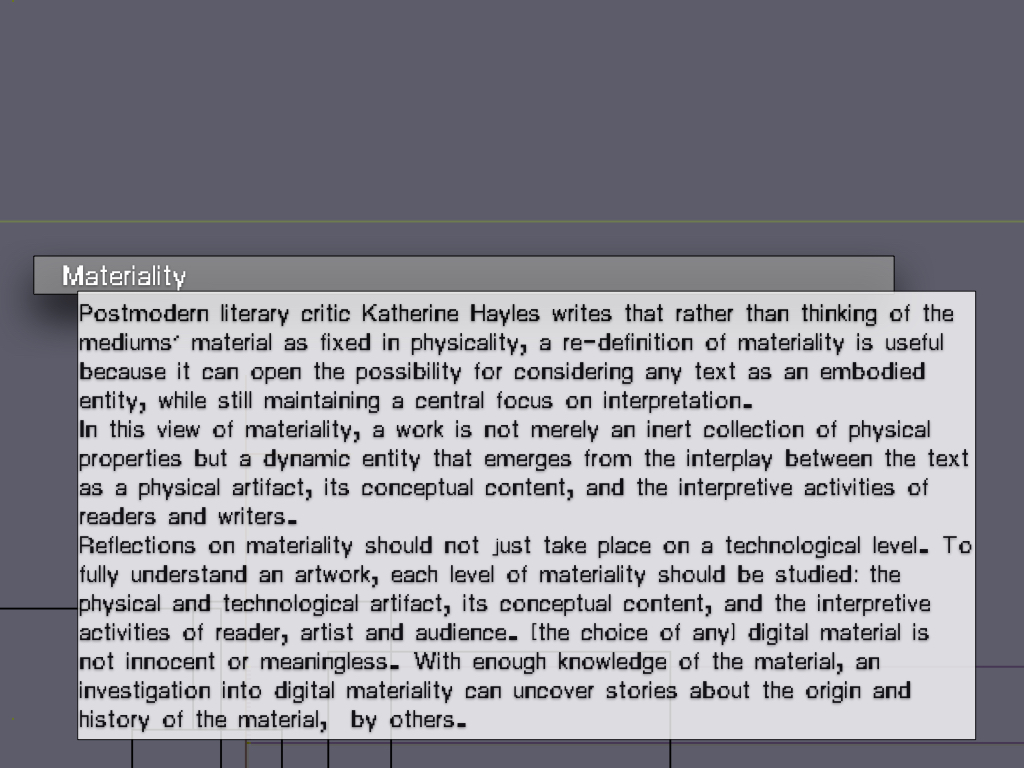
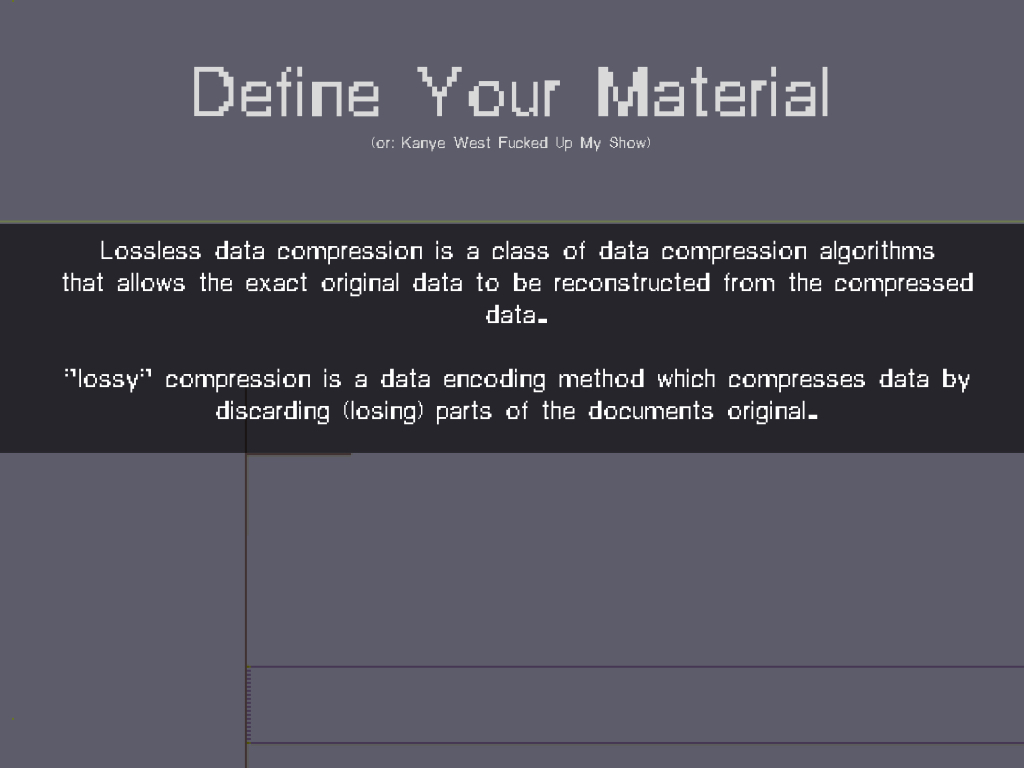
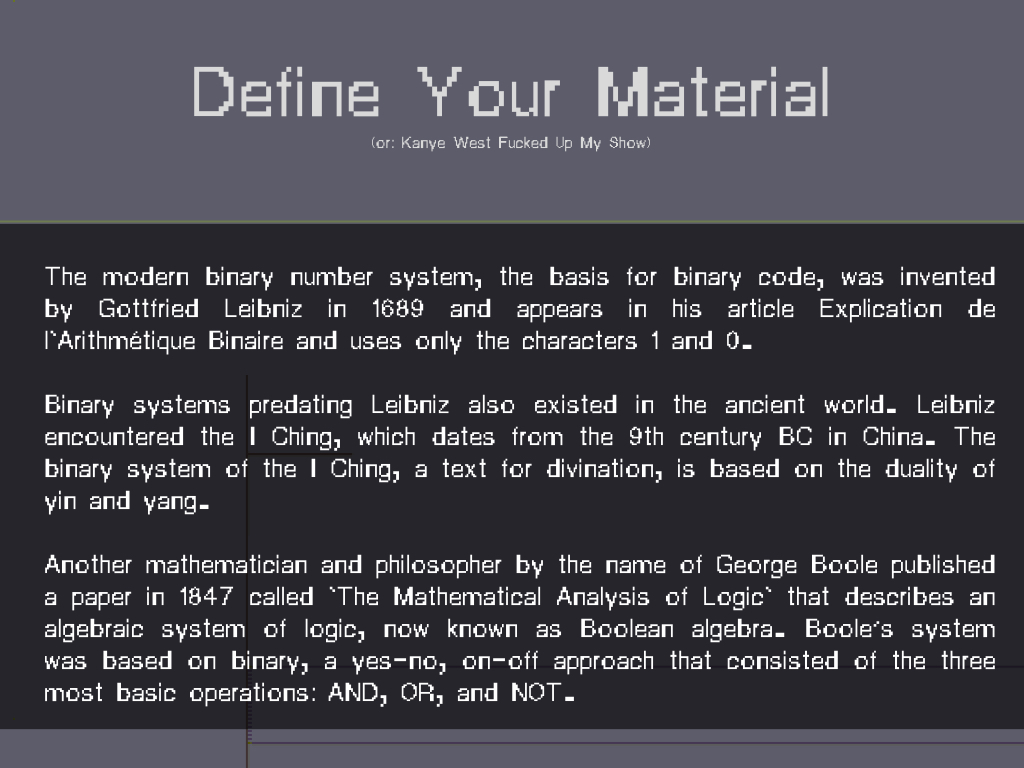




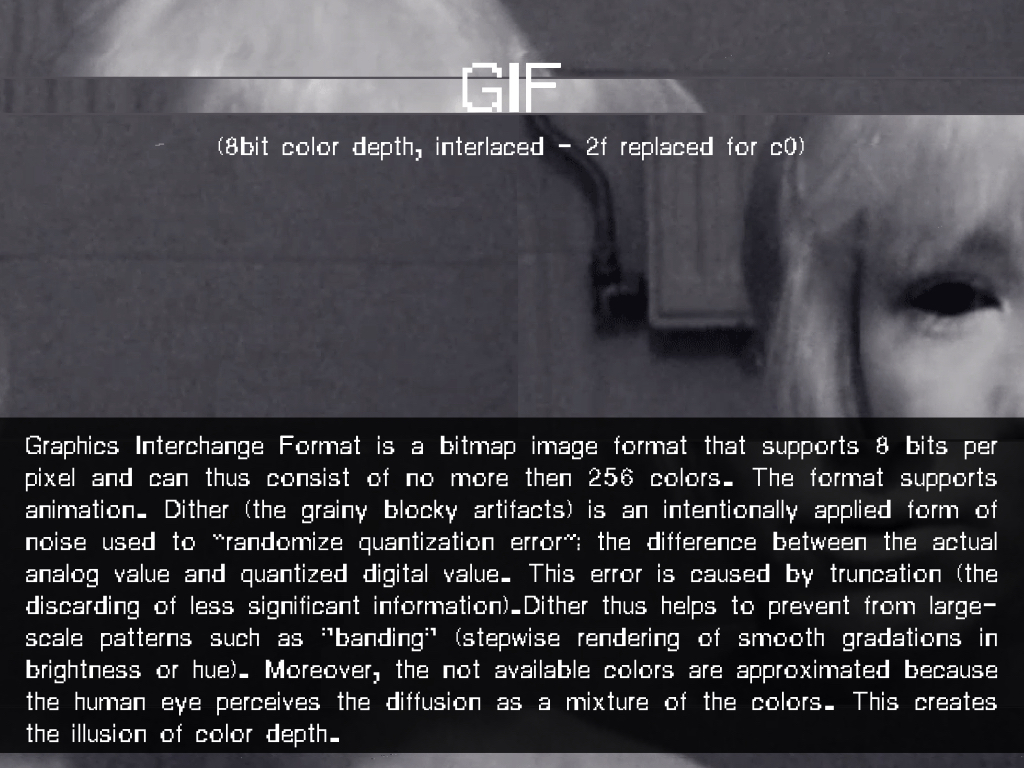
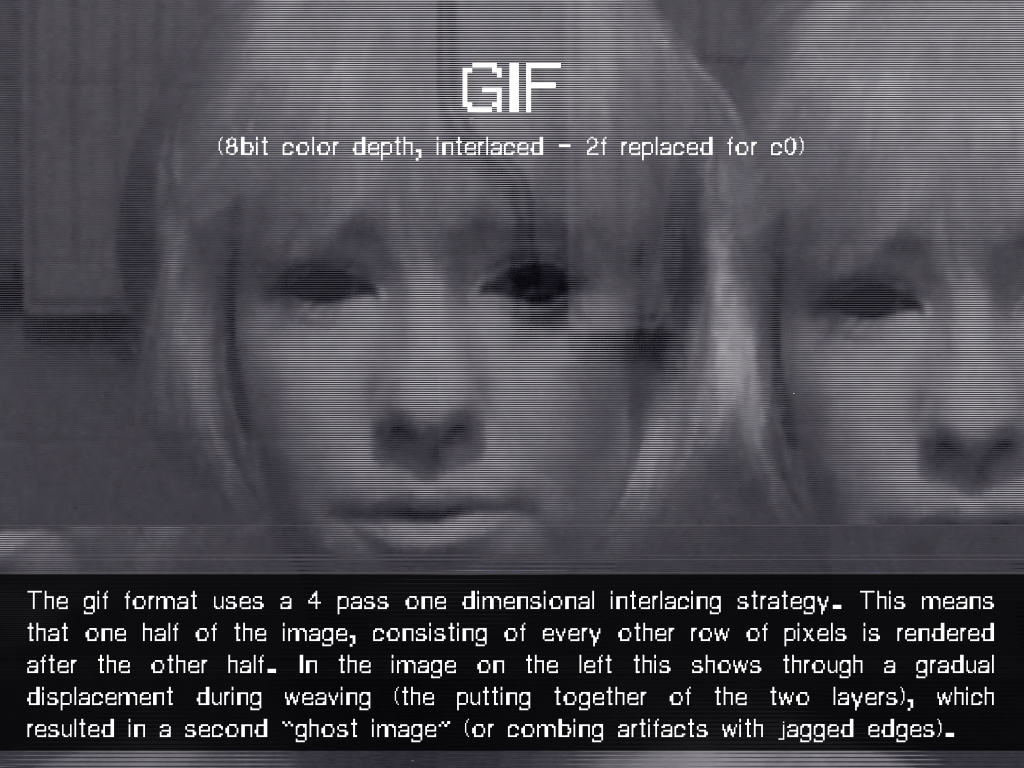





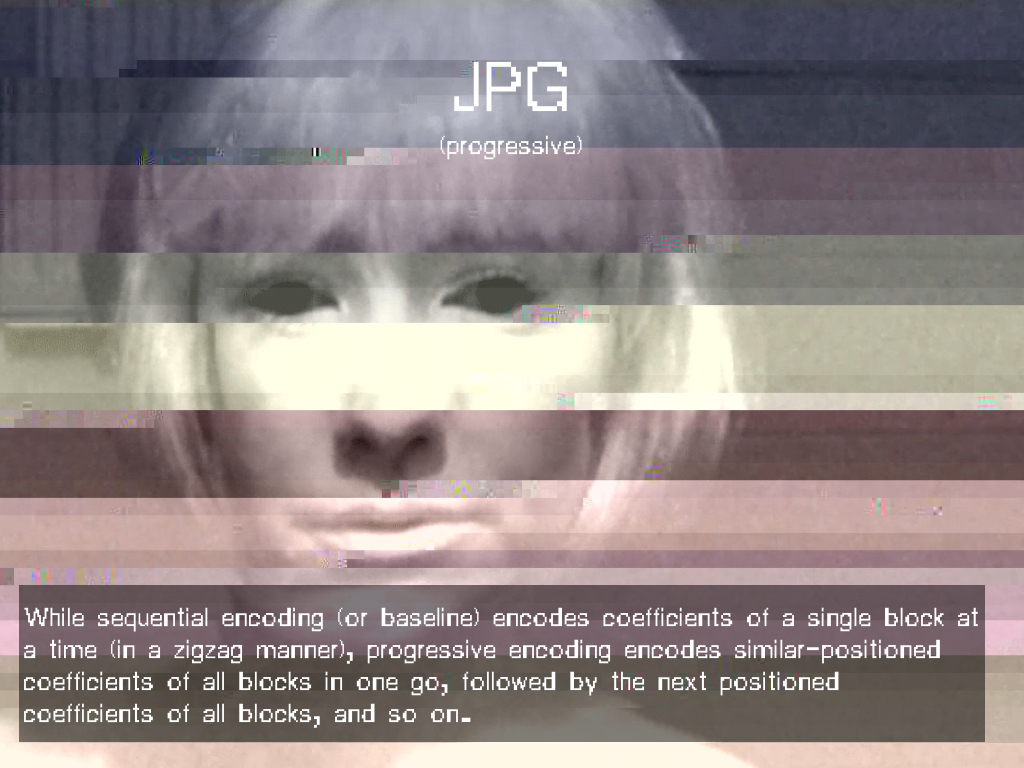



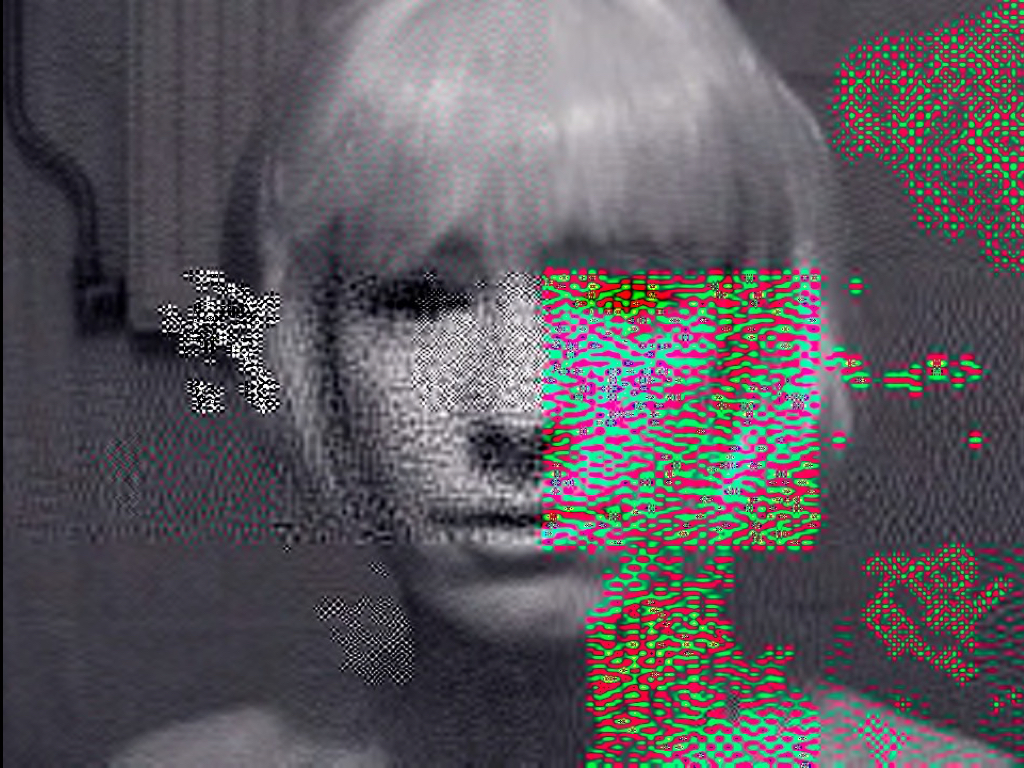
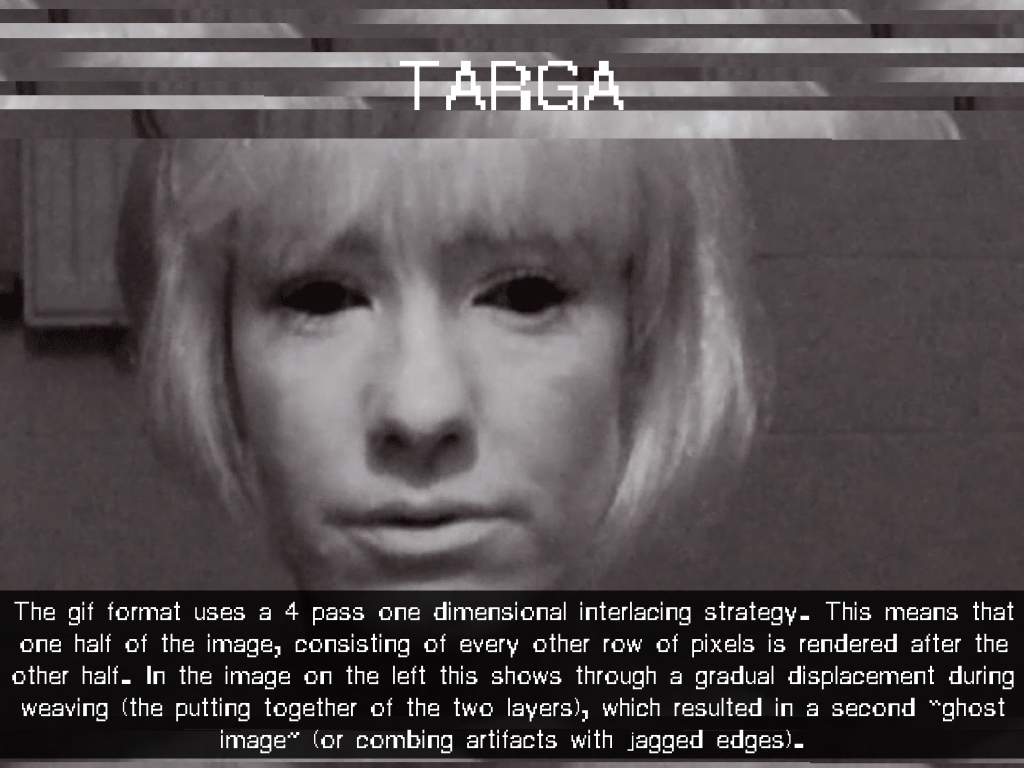
Unresolved (2020)
 8192 x 4 CM
8192 x 4 CM long painting on canvas,
or
data file to be wrapped
on hardware
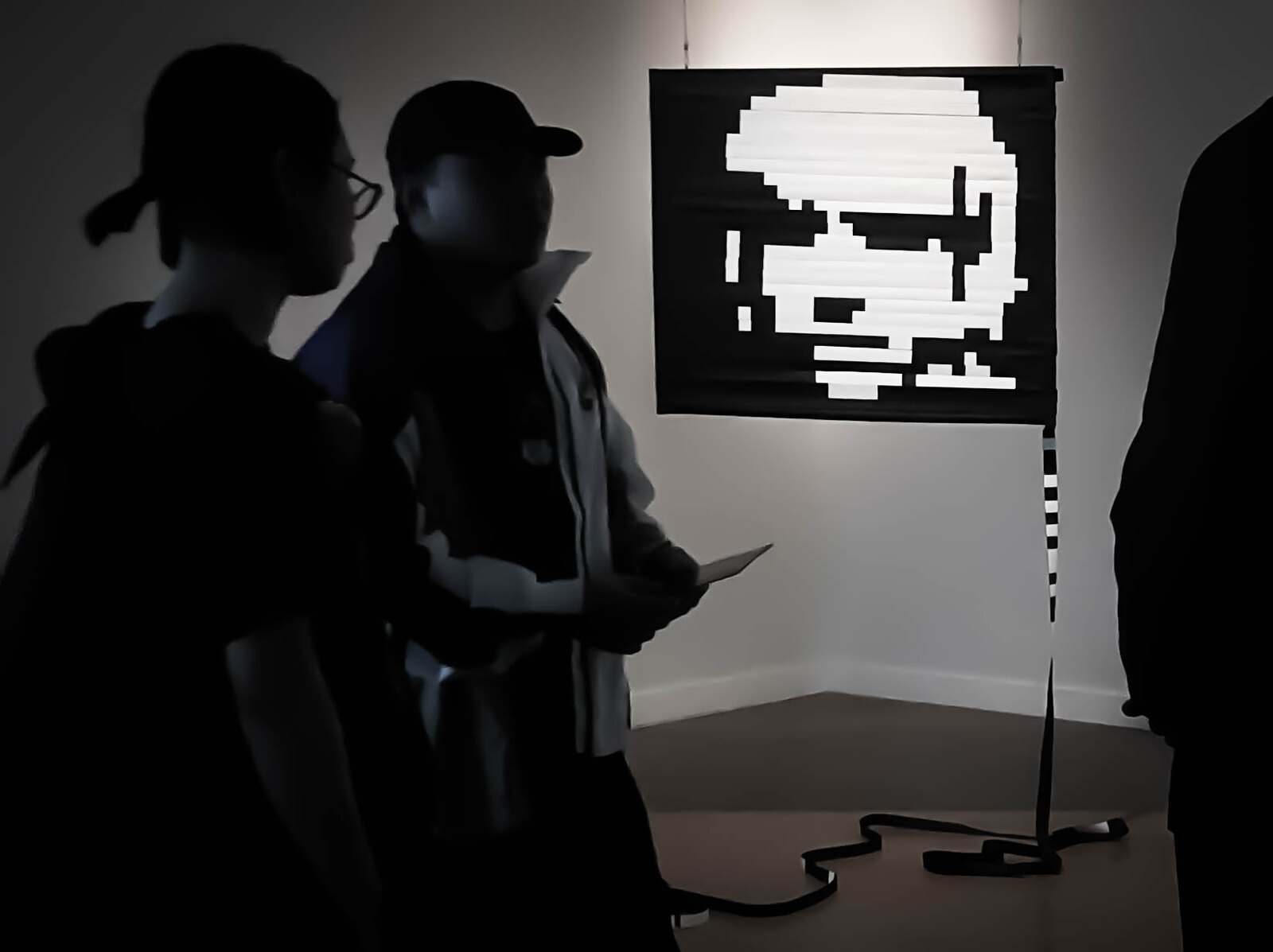
 8192 x 4 CM long painting on canvas, or data file, to be wrapped over hardware
8192 x 4 CM long painting on canvas, or data file, to be wrapped over hardwareInspired by the 2011 works “Beyond Yes and No” and “29 PARALLEL STRIPES”, by glitch artist Beflix, Unresolved explores an alternative method of painting data.
Using a bitmap image, Menkman followed the linear organization of pixelelated data: in a BMP file, the image data (luminocity and chrominance) is encoded pixel by pixel, in a linear fashion, one after the other.
In Unresolved, every pixel or point of data is painted on a 64 meter long canvas strip, and then mounted on a frame.
When hung correctly, unrolled over hardware with the right dimensions, Unresolved displays a double sided image - on one side Menkmans portrait, and on the other side a message in DCT (Menkman’s cryptographic tool from 2015): BEYONDRESOLUTION.
Through this work, Menkman presents the ways in which a bitmap file, when ‘opened’ on different hardware, can create alternate modes of reading and seeing: the hardware defines what is perceived.
some images of the making of: 32 stripes of canvas were encoded, sewn into a very long strip, and painted.
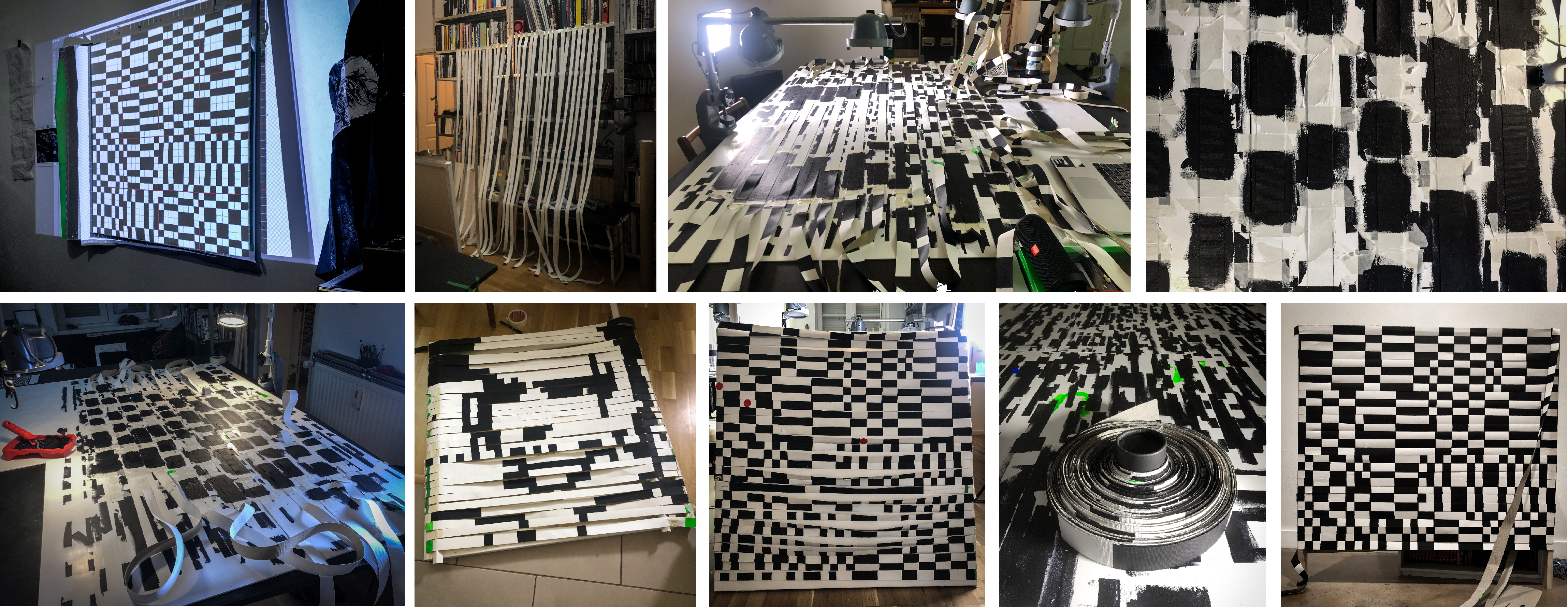
[archeology of DCT]

A Discrete Cosine Transform or 64 basis functions of the JPEG compression (Joint Photographic Experts Group) 8 x 8 pixel macroblocks.
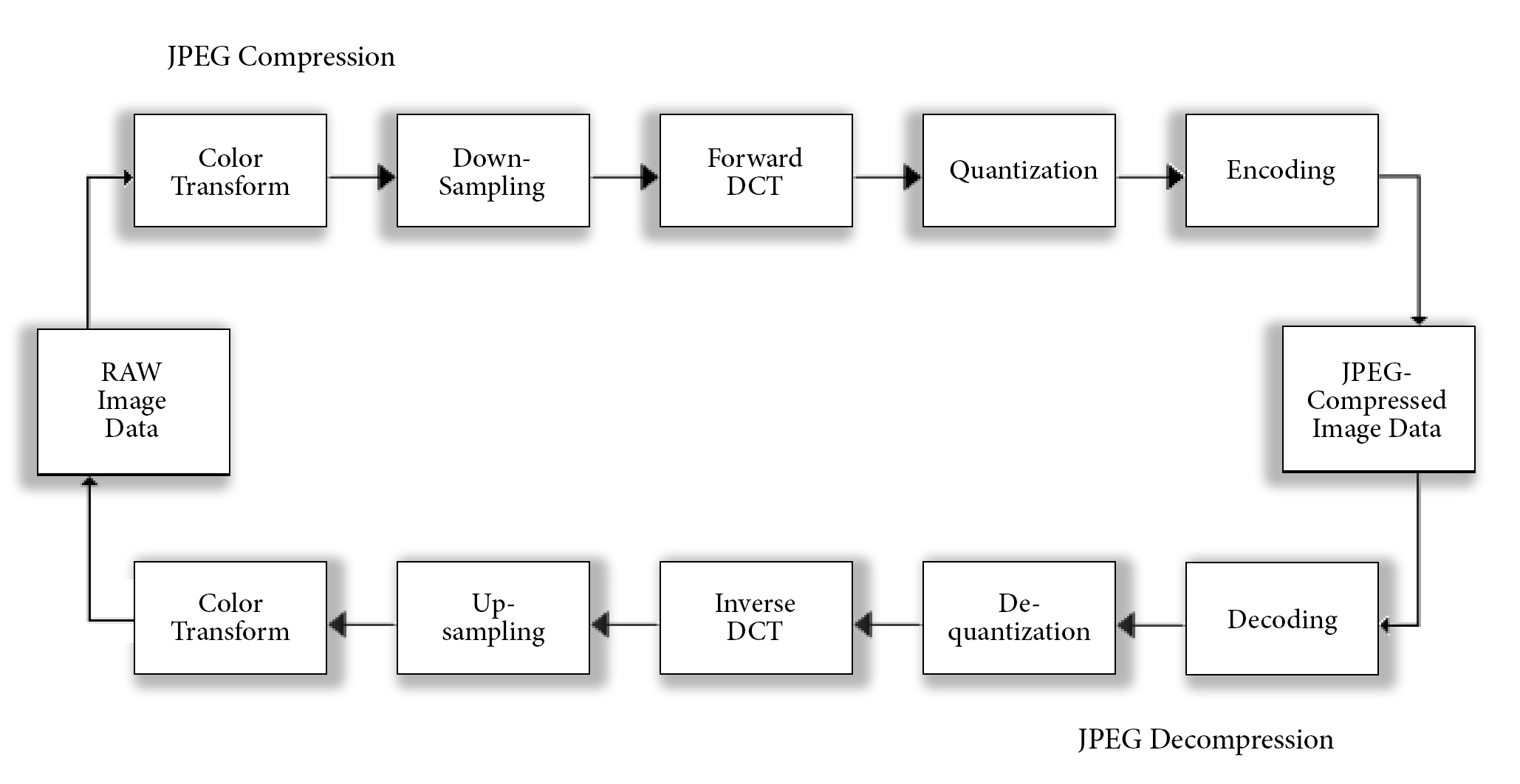 The .JPEG compression consists of these six subsequent steps
The .JPEG compression consists of these six subsequent steps
1. Color space transformation. Initially, the image has to be transformed from the RGB colorspace to
Y′CbCr. This colorspace consists of three components that are handled separately; the Y’ (luma or brightness) and the Cb and Cr values; the blue-difference and red-difference Chroma components.
2. Downsampling. Because the human eye doesn’t perceive small differences within the Cb and Cr space very well, these elements are downsampled, a process that reduces its data dramatically.
3. Block splitting. After the colorspace transformation and downsampling steps, the image is split into 8 x 8 pixel tiles or macroblocks, which are transformed and encoded separately.
4. Discrete Cosine Transform. Every Y’CbCr macroblock is compared to all 64 basis functions (base cosines) of a Discreet Cosine Transform. A value of resemblance per macroblock per base function is saved in a matrix, which goes through a process of reordering.
5. Quantization. The JPEG compression employs quantization, a process that discards coefficients with values that are deemed irrelevant (or too detailed) visual information. The process of quantization is optimized for the human eye, tried and tested on the Caucasian Lena color test card.
Effectively, during the quantization step, the JPEG compression discards most of all information within areas of high frequency changes in color (chrominance) and light (luminance), also known as high contrast areas, while it flattens areas with low frequency (low contrasts) to average values, by re-encoding and deleting these parts of the image data. This is how the rendered image stays visually similar to the original – least to human perception. But while the resulting image may look similar to the original, the JPEG image compression is Lossy, which means that the original image can never be reconstructed.
6. Entropy coding. Finally, a special form of lossless compression arranges the macroblocks in a zigzag order. A Run-Length Encoding (RLE) algorithm groups similar frequencies together while Huffman coding organizes what is left.

Revealing the surface and structure of the image *
<href: Ted Davis: ffd8, 2012>
A side effect of the JPEG compression is that the limits of the images’ resolution – which involve not just the images’ number of pixels in length and width, but also the luma and chroma values, stored in the form of 8 x 8 pixel macroblocks – are visible as artifacts when zooming in beyond the resolution of the JPEG.
Because the RGB color values of JPEG images are transcoded into Y’CbCr macroblocks, accidental or random data replacements can result into dramatic discoloration or image displacement. Several types of artifacts can appear; for instance ringing, ghosting, blocking, and staircase artifacts. The relative size of these artifacts demonstrates the limitations of the JPEGs informed data: a highly compressed JPEG will show relatively larger, block-sized artifacts.
▩ [ DCT encryption ]
HOW NOT TO BE READ* [ a recipe using DCT ENCRYPTION ]
<href: Hito Steyerl: How Not to Be Seen, 2013>
The legibility of an encrypted message does not just depend on the complexity of the encryption algorithm, but also on the placement of the data of the message. Here they are closely connected to resolutions: resolutions determine what is read and what is unseen or illegible.
DCT ENCRYPTION (2015) uses the aesthetics of JPEG macroblocks to mask its secret messages on the surface of the image, mimicking error. The encrypted message, hidden on the surface is only legible by the ones in the know; anyone else will ignore it like dust on celluloid.
While the JPEG compession consists of 6 steps, the basis of the compression is DCT, or Discrete Cosine Transform. During the final, 6th step of the JPEG compression, entropy coding, a special form of lossless data compression, takes place. Entropy coding involves the arranging the image components in a "zigzag" order, using run-length encoding (RLE) to group similar frequencies together.
How Not to be Read, a recipe using DCT:
︎ for the #3D Additivist Cookbook.
︎ DCT won the Crypto Desgin Challenge Award in 2015.
<href: Hito Steyerl: How Not to Be Seen, 2013>
A PDF with this work is downloadable here
The legibility of an encrypted message does not just depend on the complexity of the encryption algorithm, but also on the placement of the data of the message. Here they are closely connected to resolutions: resolutions determine what is read and what is unseen or illegible.
DCT ENCRYPTION (2015) uses the aesthetics of JPEG macroblocks to mask its secret messages on the surface of the image, mimicking error. The encrypted message, hidden on the surface is only legible by the ones in the know; anyone else will ignore it like dust on celluloid.
While the JPEG compession consists of 6 steps, the basis of the compression is DCT, or Discrete Cosine Transform. During the final, 6th step of the JPEG compression, entropy coding, a special form of lossless data compression, takes place. Entropy coding involves the arranging the image components in a "zigzag" order, using run-length encoding (RLE) to group similar frequencies together.
How Not to be Read, a recipe using DCT:
- Choose a lofi JPEG base image on which macroblocking artifacts are slightly apparent. This JPEG will serve as the image on which your will write your secret message.
- If necessary, you can scale the image up via nearest neighbour interpolation, to preserve hard macroblock edges of the base image.
- Download and install the DCT font
- Position your secret message on top of the JPEG. Make sure the font has the same size as the macroblock artifacts in the image
- Flatten the layers (image and font) back to a JPEG. This will make the text no longer selectable and readable as copy and paste data.
︎ for the #3D Additivist Cookbook.
︎ DCT won the Crypto Desgin Challenge Award in 2015.

 A Discrete Cosine Transform simplified to make a monochrome .ttf font and iRD logo. In the logo RLE 010 000 - 101 1111 signifies the key to the DCT encryption: 010 000 - 101 1111 are the binary values of the 64 most used ASCII glyphs, which are then mapped onto the DCT in a zig zag order (following RLE).
A Discrete Cosine Transform simplified to make a monochrome .ttf font and iRD logo. In the logo RLE 010 000 - 101 1111 signifies the key to the DCT encryption: 010 000 - 101 1111 are the binary values of the 64 most used ASCII glyphs, which are then mapped onto the DCT in a zig zag order (following RLE).

Discrete Cosine Transform (DCT) was first conceived for the Crypto Design Challenge
“A recipe using DCT” was released in the #Additivism cookbook.
Mesmerized by the screen, focusing on the moves of a next superhero, I was conditioned to ignore the dust imprinted on the celluloid or floating around in the theater, touching the light of the projection and mingling itself with the movie.
The dust – micro-universes of plant, human and animal fibers, particles of burnt meteorites, volcanic ashes, and soil from the desert – could have told me stories reaching beyond my imagination, deeper and more complex than what resolved in front of me, reflecting from the movie screen.
… But I never paid attention.
I focused my attention to where I was conditioned to look: to the feature, reflecting from the screen. All I saw were the images. I did not see the physical qualities of the light nor the materials making up its resolution; before, behind, and beyond the screen.
Decennia of conditioning the user to ignore these visual artifacts and to pay attention only to the overall image has changed these artifacts into the ultimate camouflage for secret messaging. Keeping this in mind, I developed DCT.
Premise of DCT is the realisation that the legibility of an encrypted message does not just depend on the complexity of the encryption algorithm, but also on the placement of the message. This encrypted message, hidden on the surface of the image, is only legible by the ones in the know; anyone else will ignore it. Like dust on celluloid, DCT is mimics JPEG error. It appropriates the algorithmic aesthetics of JPEG macroblocks to stenographically mask a secret message, mimicking error. The encrypted message, hidden on the surface of the image, is only legible by the ones in the know.
“A recipe using DCT” was released in the #Additivism cookbook.
Mesmerized by the screen, focusing on the moves of a next superhero, I was conditioned to ignore the dust imprinted on the celluloid or floating around in the theater, touching the light of the projection and mingling itself with the movie.
The dust – micro-universes of plant, human and animal fibers, particles of burnt meteorites, volcanic ashes, and soil from the desert – could have told me stories reaching beyond my imagination, deeper and more complex than what resolved in front of me, reflecting from the movie screen.
… But I never paid attention.
I focused my attention to where I was conditioned to look: to the feature, reflecting from the screen. All I saw were the images. I did not see the physical qualities of the light nor the materials making up its resolution; before, behind, and beyond the screen.
Decennia of conditioning the user to ignore these visual artifacts and to pay attention only to the overall image has changed these artifacts into the ultimate camouflage for secret messaging. Keeping this in mind, I developed DCT.
Premise of DCT is the realisation that the legibility of an encrypted message does not just depend on the complexity of the encryption algorithm, but also on the placement of the message. This encrypted message, hidden on the surface of the image, is only legible by the ones in the know; anyone else will ignore it. Like dust on celluloid, DCT is mimics JPEG error. It appropriates the algorithmic aesthetics of JPEG macroblocks to stenographically mask a secret message, mimicking error. The encrypted message, hidden on the surface of the image, is only legible by the ones in the know.
DCT at W-I-N-D-O-W-S.net an exhibition organised by Jamie Allen and Peter Moosgaard




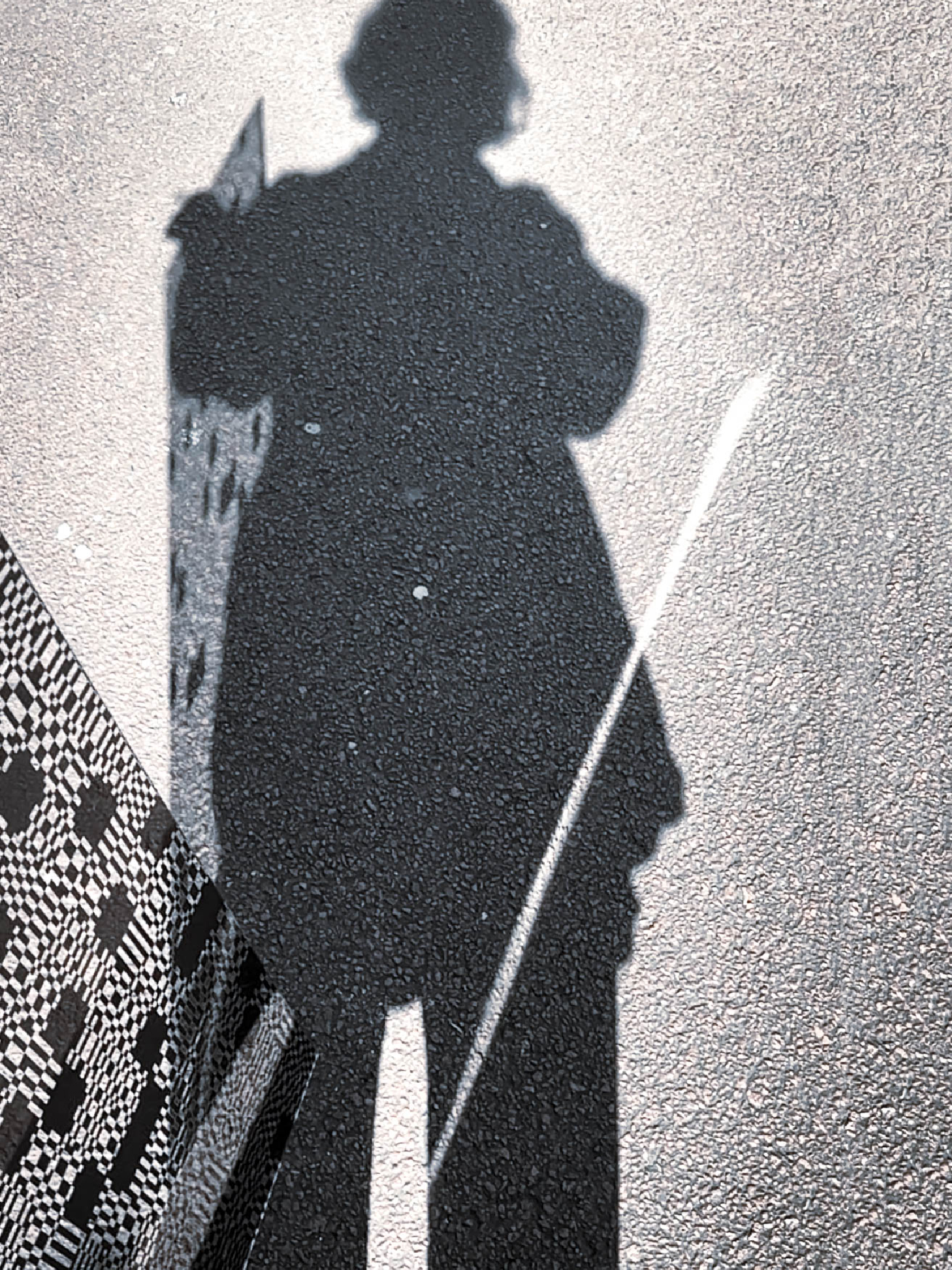


Making the Sun write cryptographic shadow messages wit DCT.

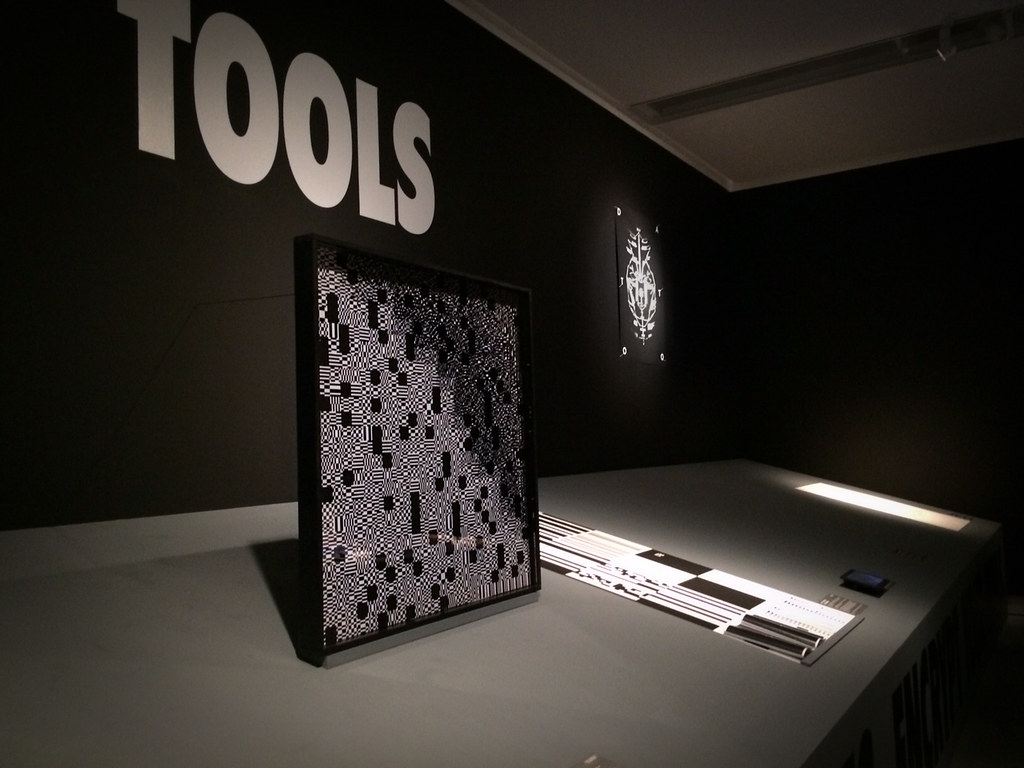 DCT at MOTI for the Crypto design challenge
DCT at MOTI for the Crypto design challenge encrypted text:
The legibility of an encrypted message does not just depend on the complexity of the encryption algorithm, but also on the placement of the data of the message.
The Discreet Cosine Transform is a mathematical technique. In the case of the JPEG compression, a DCT is used to describe a finite set of patterns, called macroblocks, that could be described as the 64 character making up the JPEG image, adding lumo and chroma values as ‘intonation’.
If an image is compressed correctly, its macroblocks become ‘invisible’. The incidental trace of the macroblocks is generally ignored as artifact or error.
Keeping this in mind, I developed DCT. DCT uses the esthetics of JPEG macroblocks to mask its secret message as error. The encrypted message, hidden on the surface of the image is only legible by the ones in the know.
 The institutions of Resolution Disputes [iRD] call attention to media resolutions. While a ’resolution’ generally simply refers to a standard (measurement) embedded in the technological domain, the iRD reflect on the fact that a resolution is indeed a settlement (solution), but at the same time a space of compromise between different actors (objects, materialities and protocols) who dispute their stakes (framerate, number of pixels etc.) within the growing digital territories.
The institutions of Resolution Disputes [iRD] call attention to media resolutions. While a ’resolution’ generally simply refers to a standard (measurement) embedded in the technological domain, the iRD reflect on the fact that a resolution is indeed a settlement (solution), but at the same time a space of compromise between different actors (objects, materialities and protocols) who dispute their stakes (framerate, number of pixels etc.) within the growing digital territories.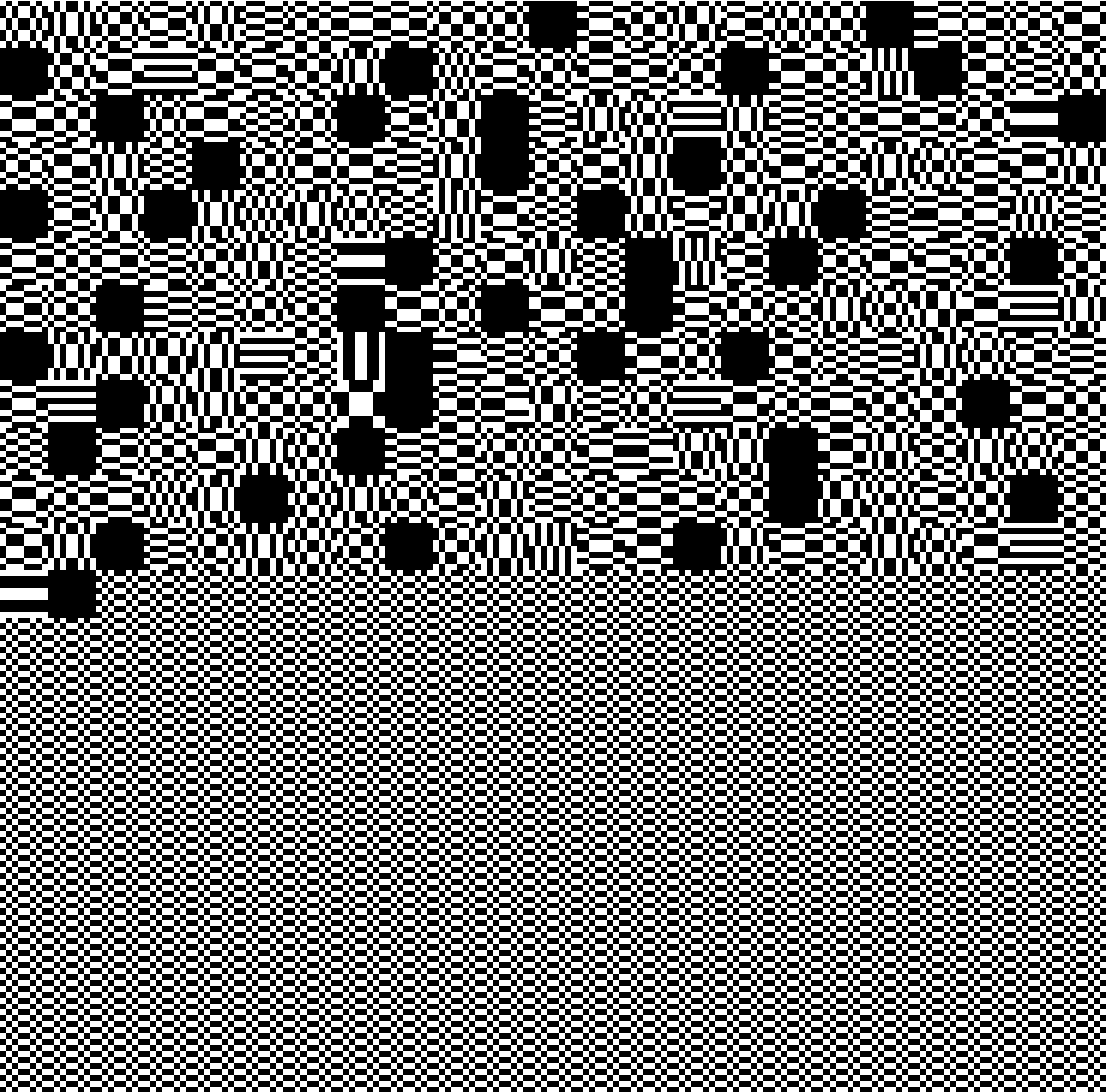 Resolutions inform both machine vision and human ways of perception. They shape the material of everyday life ubiquitously. They do this not just as an “interface effect”* but as hyperopic lens, obfuscating any other possible alternative resolution from the users media literacy.
Resolutions inform both machine vision and human ways of perception. They shape the material of everyday life ubiquitously. They do this not just as an “interface effect”* but as hyperopic lens, obfuscating any other possible alternative resolution from the users media literacy.
⠀▦▦▦▦▦▦▦▤▤▣▣▣▤ ⠀▦▦▦▦▦▦▤▤▣▣▣▤▤ ⠀▦▦▦▦▦▤▤▣▣▣▤▤▦ ⠀▦▦▦▦▤▤▣▣▣▤▤▦▦ ⠀▦▦▦▤▤▣▣▣▤▤▦▦▦ ⠀▦▦▤▤▣▣▣▤▤▦▦▦▦ ⠀▦▤▤▣▣▣▤▤▦▦▦▦▦ ⠀▤▤▣▣▣▤▤▦▦▦▦▦▦ ⠀▤▣▣▣▤▤▦▦▦▦▦▦▦ ⠀▤▣▣▣▤▤▦▦▦▦▦▦▦ ⠀▤▤▣▣▣▤▤▦▦▦▦▦▦ ⠀▦▤▤▣▣▣▤▤▦▦▦▦▦ ⠀▦▦▤▤▣▣▣▤▤▦▦▦▦ ⠀▦▦▦▤▤▣▣▣▤▤▦▦▦ ⠀▦▦▦▦▤▤▣▣▣▤▤▦▦ ⠀▦▦▦▦▤▤▣▣▣▤▤▦▦ ⠀▦▦▦▦▦▤▤▣▤▤▦▦▦ ⠀▦▦▦▦▦▦▤▣▤▦▦▦▦ ⠀▦▦▦▦▦▦▦▣▦▦▦▦▦ ⠀▦▦▦▦▦▦▦▣▦▦▦▦▦
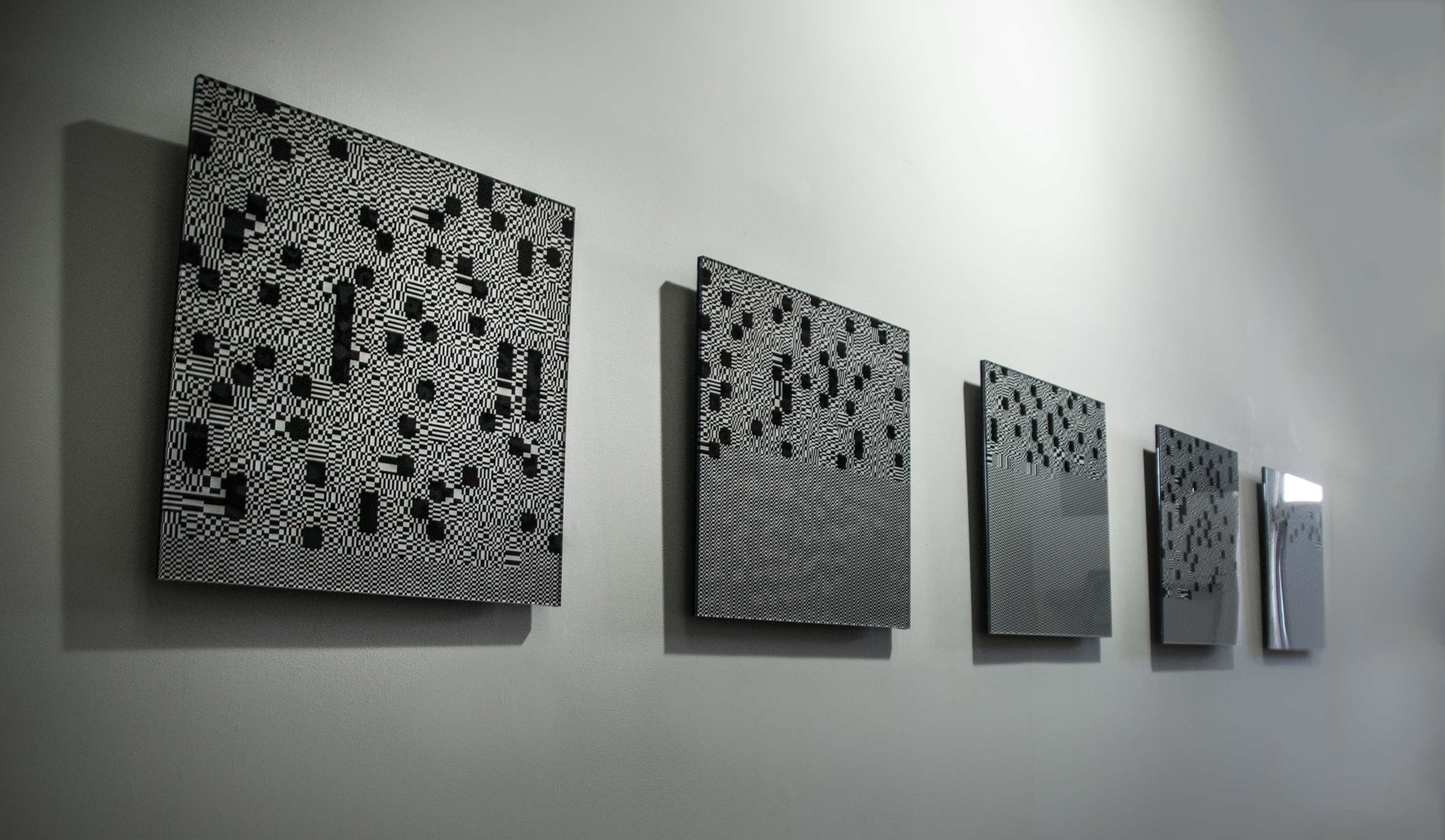
“everywhere we imagined ourselves standing turned into a cliche beneath our feet”
–Naomi Klein, No logo, 1999.
A publication in five acrylics / five postcards.
Even though the iRD mimics an institute, in reality it is not a classic, institutional organ. Instead, the iRD multiplexes the term institution, by revisiting its usage in the late 1970s. In this context, formulated by Joseph Goguen and Rod Burstall, institution refers to a slightly ‘more compound framework’, that deals with the growing complexities, connecting different logical systems (such as databases and programming languages) within computer sciences. A main result of these non-logical institutions is that different logical systems can be glued together at a substrata level, forming illogical frameworks through which computation also takes place.
Inspired by the idea of hyper functional, yet illogical frameworks, the iRD is dedicated to researching the interests of anti-utopic, obfuscated, lost and unseen, or simply ‘too good to be implemented’ resolutions.
The institutions of Resolution Disputes [iRD] call attention to media resolutions. While a resolution generally simply refers to a determination of functional settings in the technological domain, the iRD stresses that a resolution is indeed a settlement (solution), but at the same time also entails a space of compromise between different actors (objects, materialities, and protocols) in dispute over norms (frame rate, number of pixels etc.). Common settings can ossify as generally accepted requirements or de facto standards, while others standards are notated as norms by standardizing organizations such as the International Organization for Standardization. We call this progress*.
Resolutions are non-neutral standard settings that involve political, economical, technological and cultural values and ideologies, embedded in the genealogies and ecologies of our media. In an uncompromisingly fashion, quality (fidelity) speed (governed by efficiency) volume (generally encapsulated in tiny-ness for hardware and big when it comes to data) and profit (economic or ownership) have been responsible for plotting the vector of progress. This dogmatic configuration of belief x action has made upgrade culture a great legitimizer of violence, putting its insufficient technological resolutions to rest. While a resolution can thus be understood as a manifold assemblage of common, but contestable standards, it should also be considered in terms of other options; those that are unknown and unseen, obsolete and unsupported.
.
Resolutions inform both machine vision and human ways of perception. They shape the material of everyday life ubiquitously. As the media landscape becomes more and more compound, or in other words, an heterogenous assemblage in which one technology never functions on its own, its complexities have moved beyond a fold of everyday settings. Technological standards have compiled into resolution clusters; media platforms that form resolutions like tablelands, flanked by steep cliffs and precipices looking out over obscure, incremental abysses that seem to harbor a mist of unsupported, obsolete norms.
The platforms of resolution now organize perspective. They are the legitimizers of both inclusion and exclusion of what can not be seen or what should be done, while the fog, the other possibilities become more and more obscure.
It is important to realize that the resolutions platforms are not inherently Evil*. They can be impartial. It is important that we unpack these resolutions and note that they are conditioning our perception. A culture that adheres to only one or few platforms of resolutions supports nepotism amongst standards. These clusters actively engage simpleness and mask the issues at stake, savoring stupidity, and are finally bound to escalate into glutinous tech-fascism.
The question is, have we become unable to construct our own resolutions, or have we become oblivious to them?
Resolutions work not just as an interface effect* but as hyperopic lens, obfuscating any other possible alternative resolutions from the users screens and media literacy. When we speak about video, we only ever refer to a four cornered moving image. Why do we not consider video with more or less corners, timelines, or soundtracks. Fonts are monochrome; they do not come with their own textures, gradients or chrominance and luminance mapping. Text editors still follow the lay-out of paper; there is hardly any modularity within written word technologies. Even ghosts, the figments of our imagination, have been conditioned to communicate exclusively through analogue forms of noise (the uncanny per default), while aliens communicate through blocks and lines (the more intelligent forms of noise). We are hiking the resolution platforms comfortably. Unknowingly suffering from technological hyperopia, We have lost track of the compromises that are at stake inside our resolutions and are staring at the screens showing us mirage after mirage.
A resolution is the lens through which constituted materialities become signifiers in their own right. They resonate the tonality of the hive mind and constantly transform our technologies into informed material vernaculars.
Technology is evolving faster than we, as a culture can come to terms with. This is why determinations such as standards are dangerous; they can preclude the alternative. The radical digital materialist believes in informed materiality*: while every string of data is ambiguously fluid and has the potential to be manipulated into anything, every piece of information functions within /*adhesive/ encoding, contextualization and embedding. Different forms of ossification slither into every crevice of private life, while unresolved, ungoverned free space seems to be slipping away. There lies the power of standardization.
We are in need for a re-(Re-)Distribution of the Sensible.
The iRD offers a liminal space for resolution studies. Resolution studies is not only about the effects of technological *progress or about the esthetization of the scales of resolution. Resolution studies is a studies on how resolution embeds the tonalities of culture, in more than just its technological facets.
Resolution studies researches the standards that could have been in place, but are not. As a form of vernacular resistance, based on the concept of providing ambiguous resolutions, the iRD employs the liminal resolution of the screen as a looking-glass. Here, hyperopia is fractured and gives space to myopia, and visa versa. This is how iRD exposes the colors hidden inside the grey mundane objects* of everyday life.
The iRD is not a Wunderkammer for dead media*, but a foggy bootleg trail for vernacular resistance.
Progress has fathered many dead technologies. A Wunderkammer, or curiosity cabinet of media resolutions would celebrate these dead objects by trapping them inside a glass bell, relieving them in-definitely of their action radius. While the iRD adheres to the settlements of governing media resolutions, it also welcomes ventures along the bootleg trails of the tactical undead*. These undead move beyond resolution, through the literacies of the governing techno cultures, into liminal spaces. They follow the wild and uncanny desire paths that cut through sensitive forms and off-limit areas into speculative materialities*. They threaten the status quo of secure forms of media and provide the ambiguity that is so necessary for inspiration, action and curiosity*.
The iRD believes that methods of creative problem creation* can bring authorship back to the layer of resolution setting. Resolution theory moves against what sometimes seems like an unsolvable puzzle of flattening reality, while the iRD might seem like a one way trail straight into the Sea of Fog and towards the abyss of techno-norms. But it could also be a modular framework that opens and expands standards through inspection and reflection. As any good theory of media, resolution theory is a theory on literacy. Literacy of the machines, the people, the people creating the machines and the people being created by the machines. Through challenging the platforms of resolution, it can help the wanderer to scale actively between these states of hyperopia and myopia. It can uncover crystal cities of fog as well as shine a light on the soon to be distributed futures. Here we can mine for the timonds.
︎ official Transfer Gallery page
︎ An in depth all info PDF about this work
︎ Resolution Challenge!
︎ the essay
COVERAGE
‘Resolution Disputes: A Conversation Between Rosa Menkman and Daniel Rourke’, Furtherfield
“By using the terms ‘obfuscation’ and ‘dysfunction’ you are invoking a will – perhaps on your part, but also on the part of the resolutions themselves – to be recognised. I love that gesture. I can hear the objects in iRD speaking out; making themselves heard, perhaps for the first time.”
‘Accidental Vision’, Postmatter“The boundaries of the screen are challenged in Rosa Menkman’s new exhibition at TRANSFER Gallery, using technological error to disrupt expectations.”
‘Having Cryptic Conversations about Encrypted Graphics’, The Creator’s Project“ Rosa Menkman’s new media artwork celebrates both the computer screen glitch and the actual resolution of the image it’s trying—and failing—to represent, highlighting the accidents in the “free space” between them.”
︎ A tour of Internet Yami-ichi, the offline Internet flea market (featuring the i.R.D.) by Regine Debatty on We Make Money Not Art.
 The question is, ‘have we become unable to construct our own resolutions, or have we become oblivious to them?’ Either way we are in need for another re-“(Re-)Distribution of the Sensible”.
The question is, ‘have we become unable to construct our own resolutions, or have we become oblivious to them?’ Either way we are in need for another re-“(Re-)Distribution of the Sensible”.
 iRD intend to impose methods of “creative problem creation” to bring authorship back to the layer of setting a 'resolution'. The radical digital materialist believes in an “informed materiality”; while every string of data is ambiguously fluid and has the potential to be manipulated into anything, every piece of information functions within /adhesive*/ encoding, contextualization and embedding (etc).
iRD intend to impose methods of “creative problem creation” to bring authorship back to the layer of setting a 'resolution'. The radical digital materialist believes in an “informed materiality”; while every string of data is ambiguously fluid and has the potential to be manipulated into anything, every piece of information functions within /adhesive*/ encoding, contextualization and embedding (etc).
 Through iRDs tactics beyond resolution, the otherwise grey mundane objects of everyday-life show their colors. iRD is not a wunderkabinet of dead media, but a foggy bootleg trails for vernacular resistance.
Through iRDs tactics beyond resolution, the otherwise grey mundane objects of everyday-life show their colors. iRD is not a wunderkabinet of dead media, but a foggy bootleg trails for vernacular resistance.▣▣▣▣▣▣▣▣▣▣▣▣▣
